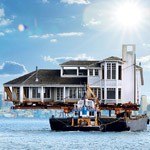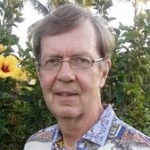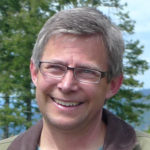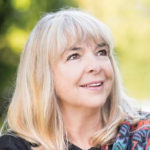Housing That Heals the Future features nine inspiring interviews on a wide range of projects that are charting the future towards healthier, happier communities. This information rich webinar also includes the incredible new six-minute film, The Animal Forest Campaign (Part 2), photographed in the beautiful Six Mountain region of North Cowichan by Icel Dobell of WhereDoWeStand.ca.
In keeping with this season’s theme of Regeneration, this episode of Creatively United’s Climate and Artists Webinar Series explores:
- Zero waste buildings and harmless homes
- Creating cohousing as sustainable living
- Healthy energy & healthy homes
- Overcoming barriers to Installing EV charging stations in stratas
- Ways housing can address climate change
- How to reduce building costs and landfill expansion
- Forest communities that save forests
- New options for farm communities
- Disruptive new technologies that break down barriers to net zero carbon living
Presenters include: Order of Canada award-winning singer/songwriter, Ann Mortifee, plus Jack Anderson, Helen Boyd, Jim Bronson & Sandi Goldie, Jim Connelly, Arno Keinonen, Doug Makaroff, and Roy Yeske.
Shareable webinar YouTube link: https://www.youtube.com/watch?v=oxrFvcox3TI
See all Webinar Replays here
Links & Resources
Canadian Association of Nurses for the Environment
Canadian Association of Physicians for the Environment
Open Letter to Ban Fossil-Fuel Promotion in Schools
Unnatural Gas
The Harmless Home
Harmless Home stats from Arno Keinonen
The Animal Forest (Part 1)
The Animal Forest (Part 2)
Where Do We Stand
Ann Mortifee Website
Forest for the Children of Cortes Island Society
River Song Cohousing
Additional Q&A
Q. We are worried about the Fortis proposal for a NEW pipeline from Penticton to Chute Lake to sign NEW homes onto Natural Gas.
A. Helen Boyd: Please feel free to use all of the resources available on Canadian Association of Physicians for the Environment (CAPE) website which including a briefing note, webinar on how to meet with your MLA: https://cape.ca/webinars/ to inform them of the negative health impacts of fracked gas.
Q. Most of Alberta’s electricity is generated by natural gas. I am putting solar panels on my house, but what else can I do?
A. Helen Boyd: Thank you so much for taking individual action. There is a great deal of advocacy to be done with elected officials and perhaps start with educating them using our https://www.unnaturalgas.org website as to impacts on the health of citizens. My understanding is that there is also much cleaner energy such as geothermal in Alberta that would be a much healthier option.
Q. Rather than going municipality by municipality, (in BC), why not lobby the province to introduce no gas in the Step Code building regs?
A. Helen Boyd: Yes, my understanding is that this is being done as we speak but I don’t know when this will be rolled out. At the moment, Step Code only looks at the Energy Efficiency of homes but there is a movement to include the reduction of GHG emissions given our Climate Emergency in the Step Code for buildings.
Q. Can hemp be grown in north east BC as an ecological economic alternative?
A. Arno Keinonen: Yes, hemp can be grown in northern B.C. The big question is whether one gets one crop a year or two. In southern to central B.C. two crops look highly likely.
Q. We are really interested in knowing more about this material and costings. We are planning a Cohousing project at Nanaimo to bring people together for connecting families towards non depressed and healthy life.
A. Arno Keinonen: The final prices for the JBF hemp blocks is not known, but it looks like the price to build out of the JBF blocks is going to be radically lower than in our home – and closely comparable to what it costs to build todays typical homes. For example in our case each hemp block costed $25 per block, and we already know that the price of manufacturing the block and the frame in it using an automated press will be $10 or less. Also the construction method which was rather labor intensive in our home is drastically reduced as a result of vastly improved methods in comparison to the highly manual labor intensive construction or the World first JBF home – ours.
A. Jim Bronson: You can learn about our unit costs at our website. We have had several price increases due to the housing market boom in Eugene, and the rising cost and accessibility of building materials.
In all cases, please feel free to send an email with questions. We are super happy to support all cohousers everywhere, even those not yet housed.
Q. Unfortunately, even stratas built as recently as 2018 face roadblocks in retrofitting to scale up from a few charging stations required by code at the time of occupancy.
A. Roy Yeske: I can appreciate that many people believe there is a major problem getting EV Charging infrastructure into condominium buildings. However, I believe all the roadblocks can be overcome by identifying the perceived roadblocks and working to overcome them. In my opinion roadblocks can be broken down into two categories: 1) Technical, 2) Human.
There is no reason why any perceived technical roadblocks cannot be overcome. For example- people believe that a number of condominiums do not have the electrical capacity to add EV charging circuits. This is totally incorrect- most charging will take place at night when the electrical load on the building is at a minimum. For example, in my own condominium the load at night recorded over 2 years averages 2 kilowatts. My electrical system is designed for 21 kilowatts. So adding an 8 kilowatt load for charging is really insignificant.
In addition there are a number of reasonably priced technologies available to ensure the building, or individual condominium circuits are not overloaded. We have used them in our condominium to allow owners to have the option of an 8 kilowatt charging supply. This is plenty of capacity for charging a vehicle at home.
All other perceived technical roadblocks can be overcome thanks to the wonderful work and support of BC Hydro and Technical Safety BC.
The human roadblocks are primarily related to owners not wanting to invest in the infrastructure. I honestly believe if owners are made aware of the benefits of installing the infrastructure they will understand that many of the future potential buyers of condominiums will be Electric Vehicle owners and will expect easy and immediate access to charging facilities in condominiums. An investment in their building now will ensure it is an attractive option for potential future buyers. As we found out in our neighbourhood, all neighbouring stratas have installed or are planning to install EV Charging Infrastructure and taking advantage of very substantial grants available from BC Hydro, and in our case Saanich Municipality.
Q. How do you physically move a house? That’s so interesting.
A. Creatively United: Agreed. Creatively United hopes to have the opportunity to find out and share that information. Thanks for watching.
Q. What is the average density of these forest communities, on the 5-15% of the land that is developed?
A. Doug Makaroff: I gather that what you are wanting to know is what is the density of housing within the developed hamlet area. (And not the overall density of 1 house for every 10 acres of gross forest land base.)
And this really can be a variable density depending on where in the hamlet the houses are located, and what the land “says” is appropriate for the area.
In the first hamlet at Elkington Forest, due to the terrain, we had three larger 1.5 acres lots, and then 15 lots fronting onto a narrow street that looped around a central garden and gathering area. The average lot size for the 15 smaller lots was approximately 7000 sq ft. But the bigger question should really be what is the lot width, or street frontage? For it is lot width that gives the sense of privacy and community. The majority of the 6-7000 sq ft lots had a street frontage of 50 – 70 feet and a lot depth of 100 or more feet. In this kind of a permanently wooded setting, the depth of the lot is almost irrelevant, as beyond the 100 or so feet, there was just another 500 acres of forested land. So, in a sense, who cares where the back property line is.
The decision to go with lot widths of between 50 – 70 feet was to allow for a modest home, plus a garden, and an accessory outbuilding such as a carriage house or tiny house. Sometimes the carriage house would be in front of the house, but it could also be at the back of the lot, depending on the location of the garden. Other areas of Elkington Forest were zoned for duplexes, and some were specifically sized so as to site a series of tiny houses. The other feature that contributed to the saving of many trees was to locate the houses closer to the front street than is typical in contemporary suburban developments, and more like how urban areas used to be built. In this way there is not a large area of land that is under used and often barren as the front yard.
The ecovillage model, which was part of the Everwoods conservation community also originally contemplated small houses built as duplexes that could be joined to create more of a family house. I think the answer to this question really depends on where is the conservation community, and who wants to live there. Part of the TSF Course on “Building a Conservation Community” deals with this very point – how to create an aesthetically pleasing sense of community.
Q. Is the co-housing doing anything to discourage single vehicles?
A: Sandi Goldie: Yes–we definitely want to discourage single vehicle travel, so we’re doing the following:
- Many of us would like to do car sharing, so we’re planning for that. Our “fleet” will include a small bus/large van, so we can have scheduled trips to grocery stores and public events.
- We have a bike barn and several bike sheds on the buildings, and River Song is located right on a major bike path that goes for about 50 miles–just 2 miles to town. The bike barn has outlets to charge electric bikes also.
- There’s a new rapid bus line going in very near the community, as well as other buses and a train station quite near.
- We’re putting in 9 level 2 chargers in the garages, and 2 double chargers in the parking spaces, and many members are looking forward to driving electric cars.
A. Jim Bronson: Yes. Lots. We are building a car-share scheme and anticipate having a shuttle for close in ride sharing. We are starting with 7 level 2 EV chargers in garages and 4 level 2 EV charging stations in public parking slots.
Speaker Bios
 Jack Anderson launched Greenplan in 2001. His educational background comprises of architecture, urban design and ecological community design. He has 15 years experience for provincial and local government agencies, including: the City of Nanaimo’s first Planning Department; the City of Nanaimo’s first Park planner in the Parks and Recreation Department; and, from 1993 to 2000, within the Regional District of Nanaimo’s Building Inspection and Planning Departments.
Jack Anderson launched Greenplan in 2001. His educational background comprises of architecture, urban design and ecological community design. He has 15 years experience for provincial and local government agencies, including: the City of Nanaimo’s first Planning Department; the City of Nanaimo’s first Park planner in the Parks and Recreation Department; and, from 1993 to 2000, within the Regional District of Nanaimo’s Building Inspection and Planning Departments.
 Helen Boyd is a registered nurse and mental health therapist who is passionately committed to conserving and enriching our planetary health for generations to come. She is the BC Representative of the Canadian Association of Nurses for the Environment and board member and liaison to the Canadian Association of Physicians for the Environment.
Helen Boyd is a registered nurse and mental health therapist who is passionately committed to conserving and enriching our planetary health for generations to come. She is the BC Representative of the Canadian Association of Nurses for the Environment and board member and liaison to the Canadian Association of Physicians for the Environment.
 Jim Bronson comes to climate activism as a scientist, Sandi Goldie as a teacher, and both as lovers of the natural world who want the best possible future for their grandchildren. In 2018, they began leading classes based on solutions to the climate crisis outlined in Paul Hawken’s book Drawdown, and were founding members of Drawdown BC.
Jim Bronson comes to climate activism as a scientist, Sandi Goldie as a teacher, and both as lovers of the natural world who want the best possible future for their grandchildren. In 2018, they began leading classes based on solutions to the climate crisis outlined in Paul Hawken’s book Drawdown, and were founding members of Drawdown BC.
They lead online Saturday Solutions Synergy Sessions every two months, where people from the US and Canada meet to inspire one another with their work for a healthy planet. They moved to Oregon in 2021, where they are helping to create River Song, a co-housing community which is implementing cooperative living in a sustainable way.
 Jim Connelly is an estimator with more than 30 years of experience with Nickel Bros. He will share the many benefits of moving homes vs. demolishing them.
Jim Connelly is an estimator with more than 30 years of experience with Nickel Bros. He will share the many benefits of moving homes vs. demolishing them.
 Arno Keinonen is an innovator and pioneer dedicated to finding low carbon building solutions. His own home was created to become one of the world’s first test cases for disruptive and revolutionary new technology. He will share an update on what has been learned from this process since Creatively United produced The Harmless Home documentary in 2019.
Arno Keinonen is an innovator and pioneer dedicated to finding low carbon building solutions. His own home was created to become one of the world’s first test cases for disruptive and revolutionary new technology. He will share an update on what has been learned from this process since Creatively United produced The Harmless Home documentary in 2019.
 Doug Makaroff is the Executive Director of The Trust for Sustainable Forestry, a registered Canadian charity.
Doug Makaroff is the Executive Director of The Trust for Sustainable Forestry, a registered Canadian charity.
Doug has 31 years of experience as a sustainable urban planner and real estate developer; creating new towns and walkable neighbourhoods with a mix of uses, ages and incomes.
From 2006 to the present, Doug has focused on building conservation communities in BC; where light-on-the-land development is clustered on 5 to 15% of the land base, with the remainder of the forest land conserved or dedicated to the most sustainable forms of eco-forestry. He will share how this model is an alternative to clear cutting and suburban sprawl that also provides jobs and homes, while saving trees.
 Award-winning musician, artist, author, environmental activist and Order of Canada recipient, Ann Mortifee, is the co-founder and chair of The Trust for Sustainable Forestry.
Award-winning musician, artist, author, environmental activist and Order of Canada recipient, Ann Mortifee, is the co-founder and chair of The Trust for Sustainable Forestry.
In 2002, Ann established the first Conservation Community on Cortes Island in British Columbia by registering a new land use zone (Community Land Stewardship Zone) as an alternative to suburban sprawl and deforestation. Not only is Ann a sought-after keynote speaker and facilitator of workshops on creativity and consciousness, but her dedication to human and planetary healing has resulted in Ann receiving numerous awards and recognition, including Queen Elizabeth II Silver and Diamond Jubilee Medals and being recognized as the YMCA’s Woman of the Year.
 With more than 30 years of experience on strata councils and 35-years as an electrical engineer, manager and administrator at Saskpower, Roy Yeske was well positioned to initiate, lead and manage his strata building’s conversion to full LED lighting and successfully install EV Ready Infrastructure to all 30 parking stalls in the building’s parkade for significant cost savings to the residents.
With more than 30 years of experience on strata councils and 35-years as an electrical engineer, manager and administrator at Saskpower, Roy Yeske was well positioned to initiate, lead and manage his strata building’s conversion to full LED lighting and successfully install EV Ready Infrastructure to all 30 parking stalls in the building’s parkade for significant cost savings to the residents.
He shares advice and tips on the many benefits these types of conversion offer and how to move projects like this forward with resistant stratas or building owners/managers.